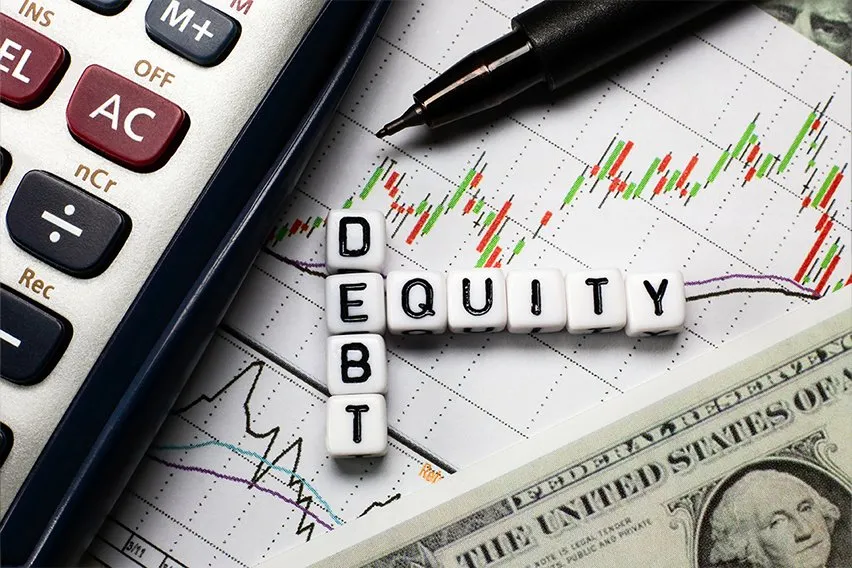What is Sharpe Ratio? An Extensive Guide

Whenever you’re investing money, you’re looking for the best investment possible. The definition of ‘best’ is dependent on the aims of your investment. Quick, high return but with a lot of additional risks. Or a less risky investment with a steady, lower return. An ideal investment is one with the highest return for the lowest risk. Or a portfolio that contains a proportion of all different types of investments.
But how do you work this out?
It’s a tricky balancing act that requires a lot of future prediction. One popular method of comparing investment performance is using the Sharpe Ratio. It calculates the extra amount of return you get per unit of risk. You can use this information to compare similar investments to see which is giving you the best risk-adjusted return. This applies to all kinds of investments, including mutual funds, shares and EFTs, as well as the usual investment portfolios.
Here’s What We’ll Cover:
Example Using the Sharpe Ratio
Advantages of Using the Sharpe Ratio
Disadvantages of Using the Sharpe Ratio
What Is the Sharpe Ratio?
The Sharpe Ratio is also known as the Sharpe Measure, Sharpe Index, Sharpe Ratio and Sharpe’s own term ‘reward-to-variability’ ratio.
It’s named after its creator, William F Sharpe, an American economist. As well as creating this performance analysis theory in 1966, William Sharpe won a Nobel Memorial Prize in Economic Sciences in 1990. This was for his academic research and development of the Capital Asset Pricing Model theory.
Sharpe’s ‘reward-to-variability ratio’ name is, unsurprisingly, the most useful in understanding what it means. The variability is the level of risk, or volatility, of the investment. Essentially, the ratio finds the difference between the investment’s expected return and its risk-free return, and divides that by the volatility of the investment. ‘Volatility’ is also called standard deviation, variability and risk.

Sharpe Ratio Formula
The Sharpe Ratio calculation is:
Sharpe Ratio = (Average Return of portfolio – Risk-free rate of return) / standard deviation
As a mathematical formula, this can be written as:
Sharpe Ratio = (Rx – Rf) /StdDev Rx
- Rx = Expected average return
- Rf = Risk-free rate
- StdDev Rx = Standard Deviation of return
To be clear, let’s just define these component parts.
- Return: The amount you make using normally distributed rates of return over a set amount of time (eg: monthly, annually)
- Average return: The average amount this investment is expected to make
- Risk-free rate (of return): How much you’d make if you made an investment with no risk at all. Zero risk – imagine! Within the context of the Sharpe Ratio, we use UK government-issued gilts as the figure for the risk-free rate in the equation. There’s no such thing as zero risk, but there is almost no possible chance of the UK government defaulting on their ‘gilt-edged securities’. In other countries, it’s usual to use their equivalent Treasury issued bonds as the risk-free rate.
- Standard deviation of return: This is the amount of movement – or deviation – of an investment’s value. How much it might go up or down by. In other words, it’s a volatility or risk factor.
So the Sharpe Ratio gives you the risk-adjusted return you get after comparing your excess return with its standard deviation (risk).
Example Using the Sharpe Ratio
You’re deciding which stock, out of 2 companies, to invest in. You want to know what the risk-return ratio is for them both.
Company 1 Stock
- Average return: 20% over the last 10 years
- Risk-free rate: 4%
- Standard deviation: 25%
Sharpe Ratio = (20 – 4) / 25 = 0.64
Company 2 Stock
- Average return: 14% over the last 10 years
- Risk-free rate: 4%
- Standard deviation: 20%
Sharpe Ratio = (14 – 4) / 20 = 0.5
Company 1’s stock has a Sharpe Ratio of 0.64 and Company 2’s is 0.5. This means that you’ll get more return per unit of risk with an investment in Company 1.
Generally speaking, a higher Sharpe Ratio signifies a ‘more bang for your buck’ investment – more return on the risk. A ‘good’ Sharpe ratio is over 1 because it represents excess returns in relation to its volatility.
But it’s all about context. If you’re comparing portfolios in a similar context, you need to consider their overall average Sharpe Ratio. It may be that 1 is considered low within a range of similar competitors.
Advantages of Using the Sharpe Ratio
The Sharpe Ratio is for analysing investments’ performance, in relation to the amount of risk they represent. This can be used to compare your current portfolios, looking at their historical returns over a given time period – sometimes called ex-post Sharpe Ratio. Or you can use the Sharpe Ratio when you’re considering future performance of expected returns – ex-ante Sharpe Ratio.
Whichever Sharpe Ratio is the highest, is an indication that it’s the best risk-return investment of that range. It helps you answer the question – is it worth the risk? Perhaps you’d be better off investing in a risk free asset, like government bonds.
The most useful element of the Sharpe Ratio is that it gives you one formula that creates one number for each investment. Suddenly the comparison between different stock options is much simpler, with this one standard unit of risk-reward measurement.
Because of this, you can also compare different types of investments more easily. If you’re looking at a choice between investing in gold or stock, the Sharpe Ratio gives you a clear number. And whichever is higher potentially has the best risk-reward outcome.

Disadvantages of Using the Sharpe Ratio
Notice that we’ve said ‘potentially’ in that last sentence. The Sharpe Ratio is a useful tool, but it’s no guarantee of a secure investment return. As you know, high risk doesn’t necessarily mean it’s not a good investment. It’s one possible accounting predictor that can help your investment decision-making process. And it has its limitations:
- Using the standard deviation of the distribution of returns across the board means that fluctuations in the markets, and the wider economic environment, aren’t factored into this particular equation. It assumes normally distributed returns, regardless of any price changes or skews in the markets.
- There is an assumption that risk is always bad – when that’s definitely not always the case when it comes to investing. Volatility is often what drives a higher return.
- All statistics can be manipulated to present the desired picture – and the Sharpe ratio is no different. The reputation of portfolio managers can be improved with evidence of consistently good risk-adjusted returns. By simply extending the time period being measured, the final figure can show a smaller amount of risk. All they have to do is use monthly instead of weekly return figures.
The Sharpe Ratio is a commonly used way to analyse investment decisions. As you can see, it’s a simple and useful way to determine risk-adjusted returns. But to get a full picture, it’s important not to use it in isolation from other accounting tools.
RELATED ARTICLES

 Activity-Based Costing (ABC): Definition, Example & Process
Activity-Based Costing (ABC): Definition, Example & Process Cost-Benefit Analysis: An Extensive Guide
Cost-Benefit Analysis: An Extensive Guide What Is Asset Management? Definition & Importance
What Is Asset Management? Definition & Importance WACC Formula, Calculations & Definition
WACC Formula, Calculations & Definition How to Cancel a Direct Debit: Everything You Need To Know
How to Cancel a Direct Debit: Everything You Need To Know What Is Debt-to-Equity-Ratio & How to Calculate It?
What Is Debt-to-Equity-Ratio & How to Calculate It?